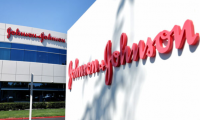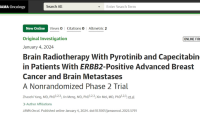-
New Blood Test Identifies Neuroendocrine Subtype of Advanced Prostate Cancer
- Source: drugdu
- 96
- January 13, 2024
-
Multi-Cancer Early Detection Solution to Address Unmet Medical Needs in Clinical Diagnosis
- Source: drugdu
- 161
- January 11, 2024
-
At JPM, Top GSK Cancer Executive Talks Drug Targets and Oncology Strategy
- Source: drugdu
- 117
- January 11, 2024
-
Merck expects $20B+ in new cancer sales thanks to Daiichi ADC deal, Moderna vaccine
- Source: drugdu
- 99
- January 11, 2024
-
Novel Diagnostic Combines Inhalable Sensors with Urine Test for Early Lung Cancer Detection
- Source: drugdu
- 89
- January 10, 2024
-
ProfoundBio’s Rinatabart Sesutecan Granted FDA Fast Track Designation for Ovarian Cancer
- Source: drugdu
- 84
- January 10, 2024
-
J&J Joins the Cancer ADC Dealmaking Spree With $2B Ambrx Acquisition
- Source: drugdu
- 134
- January 10, 2024
-
As cancer players jump head-first into ADC field, Novartis CEO explains how he’s resisted the temptation
- Source: drugdu
- 85
- January 10, 2024
-
With Phase 3 Studies Ongoing in Bladder Cancer, CG Oncology Plots Course for IPO
- Source: drugdu
- 81
- January 9, 2024
your submission has already been received.
OK
Subscribe
Please enter a valid Email address!
Submit
The most relevant industry news & insight will be sent to you every two weeks.













